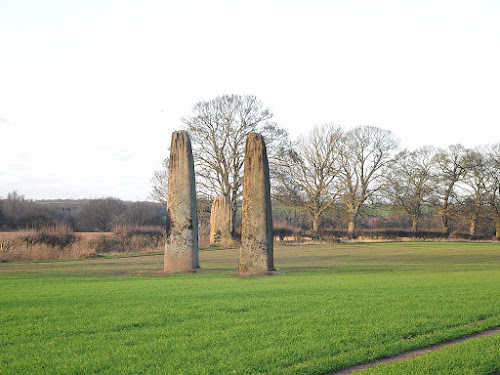 The three large standing stones known as the Devil's Arrows stand in fields
to the west of Boroughbridge. When the antiquarian John Leland visited the
town around the year 1540, there was a fourth stone located next to the
central one. His description of the stones (from north to south) runs
....
The three large standing stones known as the Devil's Arrows stand in fields
to the west of Boroughbridge. When the antiquarian John Leland visited the
town around the year 1540, there was a fourth stone located next to the
central one. His description of the stones (from north to south) runs
....
"A little without this town on the west part of Watling Street standith 4 great maine stones wrought above in conum (tapering) by man’s hand. They be set in 3 several fields at this time. The first is a 20 foot by estimation in height, and 18 foot in cumpace. The stone toward the ground is sum-what square, and so up to the middle, and then wrought with certain rude boltells (fluting) in conum. But the very top is broken of 3 or 4 foot by estimation. The other 2 of like shape stand in another field a good bow shot off and the one of them is bigger than the other : and they stand within a 6 or 8 foot one of the other. The fourth standith in a several field a good stone cast from the other 2, and is bigger and higher than any of the other 3. I esteem it to the weight of a 5 wain loads or more."
Forty years after Leland, William Camden also visited Boroughbridge and saw the standing stones, but he noted that one of the stones had recently been toppled …
"Near unto this bridge Westward we saw in three diverse little fields four huge stones of pyramidal form, but very rudely wrought, set as it were in a straight and direct line. The two Pyramids in the middle, whereof the one was lately pulled down by some that hoped, though in vain, to find treasure, did almost touch one another. The outer most stand not far off, yet almost in equal distance from these on both sides"

